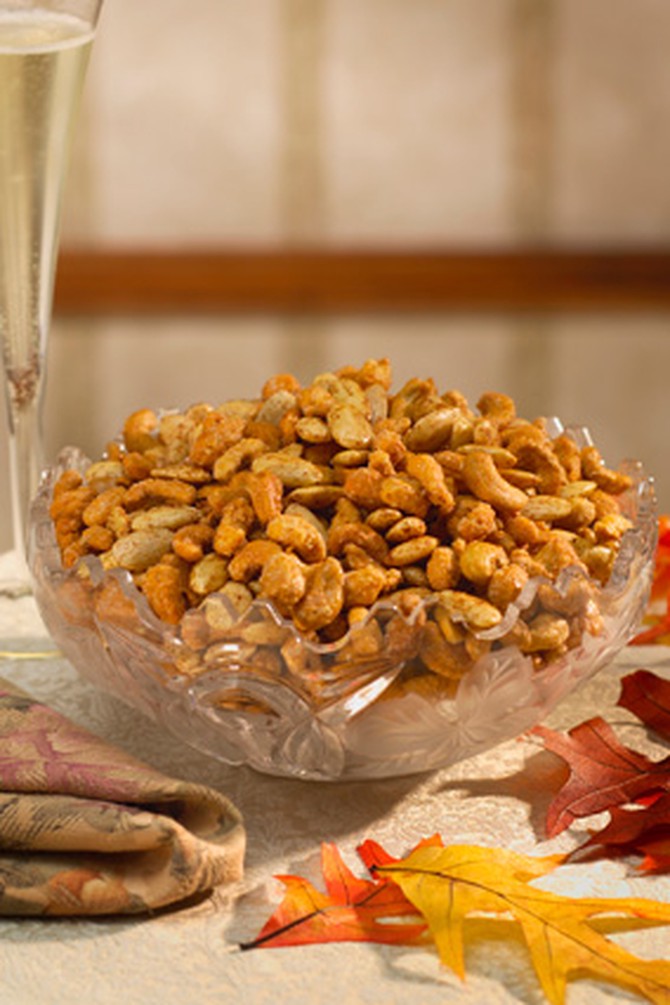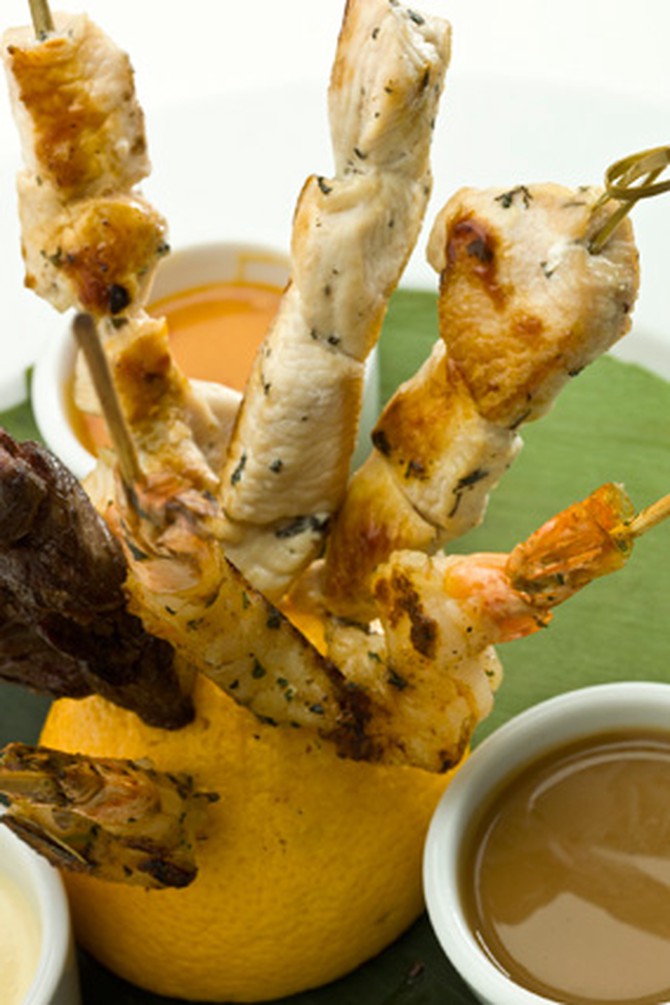The Hidden Calories in "Healthy" Party Foods
There are nutritious snacks at a holiday party, and there are foods that only seem nutritious. We sort the naughty from the nice.
By Corrie Pikul

Photo: Thinkstock
Cheese
At every party you attend this year, there will be cheese. And around every cheese plate, there will be guests who don't realize how much of it they're eating. Tracy Gensler, a Best Life nutritionist, says this is one of the most common party mistakes she sees. An 80-calorie portion of cubes, slices or a spread is only about the size of two AA batteries, she says, and most people eat three to five times that amount (in case you're wondering, the calcium benefits are outweighed by the high fat content). The truth is, Gensler says, a once-a-year splurge probably isn't going to cause too much damage. But given the number of parties you'll attend this year at the homes of fromagophile hosts, it's best to be Cheddar-aware.

Photo: Thinkstock
Vegetable Platters
We park ourselves next to the crudités thinking: "Vegetables. Plain, naked vegetables. This is what we shall eat—and only this." But before we know it, we've consumed hundreds of calories of dip. "Party dips are never low fat," says Gensler—unless you make them yourself using a healthier recipe (like one of these). When you're at someone else's party, fill your plate with bell pepper strips, broccoli, cherry tomatoes and carrot sticks. Now add a scoop of dip the size of an ice cube. Your plate can literally overflow with vegetables (and you can go back as often as you'd like), says Gensler, but you're stuck with one serving of dip, so ration accordingly.

Photo: Thinkstock
Mixed Nuts
The nuts you come across at parties shouldn't be confused with the good-for-you almonds you snack on at home. Those nuts on the bar have probably been roasted in oil or doused in salt, or they've been candied with lots of sugar. Gensler advises limiting your portion size of all nuts (peanuts or cashews, gussied up or plain) to about two tablespoons, or the amount that just covers the palm of your hand.

Photo: Thinkstock
Petite Vegetable Appetizers
Miniature spinach-and-mushroom quiches seem healthier than miniature Cheddar-and-bacon quiches—look at all those green flecks!—but Gensler says the nutritional value of the vegetables is low compared to the mega-fattening butter, eggs and cheese. Here's another factor to keep in mind: A recent study showed that foods we consider to be sensible diet choices seem less satisfying than those we think of as decadent. This has the effect of making us eat even more of the "better" choice (i.e., the veggie apps) than we would of the indulgent ones. These mini quiches are 80 to 120 calories each, and that can quickly add up if you're eating them like carrot sticks. If you really want the Cheddar-and-bacon version, have one or two—and make it a point to savor those bites.

Photo: Thinkstock
Bruschetta
A tiny piece of bread, some tomatoes, some olive oil—sounds like a something a fit Italian would eat, but this appetizer may be much higher in fat than you realize. Gensler suggests checking for a telltale shine on the top and bottom of the bread; that will give you a sense of how oily it is. A teaspoon of olive oil has about 45 calories, and the bread is another 40—that's over 80 calories before you even get to the toppings.

Photo: Thinkstock
Chicken Skewers with Dipping Sauce
Gensler says that chicken skewers are an excellent source of lean protein. It's the condiment you need to use sparingly. The peanut dips at parties can be excessively oily and very high in fat, and teriyaki or soy sauces are loaded with sodium. She suggests dipping a quarter of the skewer in the sauce (no double-dunking!) or eating the meat plain.

Photo: Thinkstock
Veggie Chips
Beets. Parsnips. Sweet potatoes. The ingredient list on the back of the package sounds like a week's bounty at the farmers' market. How could these not be good for us? (Okay, maybe not good, but they can't be terrible, right?) Unfortunately, Gensler says that veggie chips often have the same number of calories and grams of fat as potato chips. She okayed two or three chips, but then suggested switching to actual vegetables.

Photo: Thinkstock
Guacamole
Gensler is a fan: "All those great mono- and unsaturated fatty acids, and it's almost 100 percent vegetables!" But as she points out, guacamole is another virtuous food that gets dragged down by the company it keeps (again, chips are the problem). Gensler suggests taking the amount of guacamole approximate to the size of two ice cubes, and pairing with only about three or four tortilla chips or white-flour crackers. A better (if less authentically Tex-Mex) move would be to scoop the guac with whole wheat crackers, and the healthiest idea of all would be to trade chips and crackers for cucumber slices, carrot sticks and cherry tomatoes.

Photo: Thinkstock
Chocolate Bark
It's got nuts! It's got plant phenols that can lower blood pressure (well, the dark variety does)! And yet chocolate bark has the dubious distinction of making cookies look like a smarter choice. That's because it's possible to count how many gingersnaps you've had, but the irregular, broken shapes of bark make it hard to realize how much you're eating. Gensler says that just one small piece of bark would probably be comparable to a half of a candy bar. And keep in mind that winter-white chocolate bark isn't even made from cocoa—it's a faux-chocolate combo of hydrogenated oils, sugar, vanilla and milk products.
Keep Reading
Guilt-free hors d'oeuvres for your next party
Keep Reading
Guilt-free hors d'oeuvres for your next party
Published 11/28/2011

